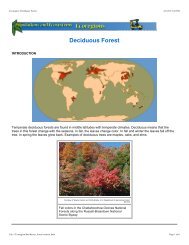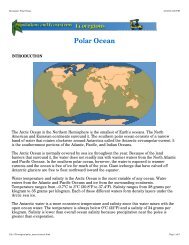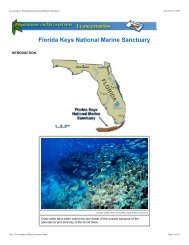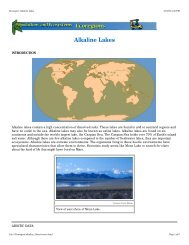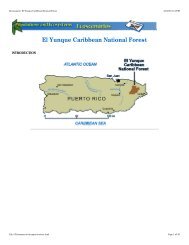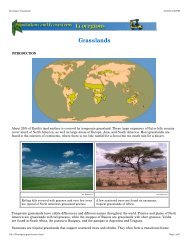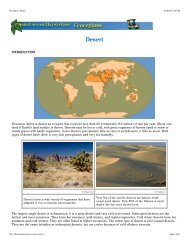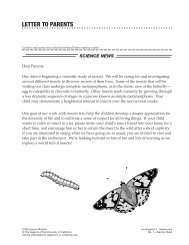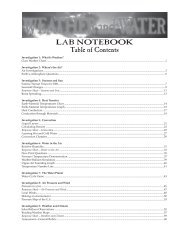Ecoscenarios Combined - FOSSweb
Ecoscenarios Combined - FOSSweb
Ecoscenarios Combined - FOSSweb
Create successful ePaper yourself
Turn your PDF publications into a flip-book with our unique Google optimized e-Paper software.
Ecoscenario: Yellowstone National Park<br />
4/16/03 3:25 PM<br />
Courtesy of Teri Dannenberg<br />
Grand Teton National Park is in the Yellowstone ecosystem.<br />
Yellowstone National Park is in the greater Yellowstone ecosystem, which also includes Grand Teton National Park<br />
and several national forests in Wyoming, southern Montana, and eastern Idaho. During its first year as a national<br />
park 300 visitors explored Yellowstone. In 2001 the number of visitors was a staggering 2,758,710.<br />
The most distinctive feature of Yellowstone National Park is the geothermal activity. Magma masses close to the<br />
surface create geothermal pools, ponds, and geysers. Geysers, like Old Faithful, throw super-heated water into the<br />
air. Old Faithful erupts every 76 to 100 minutes, and can send water over 55 meters (180 feet) into the air. Hot<br />
springs contain water heated by the same underground magma. Steam rises from these pools, carrying with it vapors<br />
that have the rotten-egg smell of sulfur. Fumaroles (steam vents) occur when there is not enough water for a hot<br />
spring. Mudpots form when a hot spring becomes choked with mud. The super-heated mud bubbles and simmers like<br />
a pot of thick soup. The water in these pools is so hot that few organisms can live in them. However, they are home to<br />
cyanobacteria (blue-green algae) and algae adapted to live in geothermal water. These color the geothermal areas<br />
yellow and orange.<br />
file:///Ecoscenario/yellow/content.html<br />
Page 4 of 15



